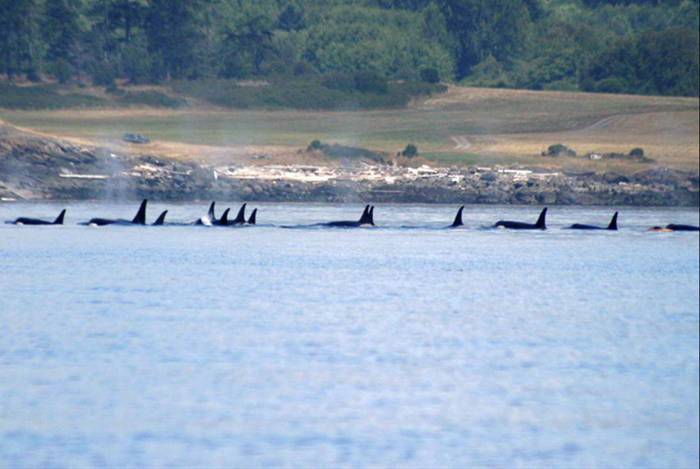Submitted by Friends of the San Juans
Although the comment period for an orca protection zone ended April 13, community members can still help Southern resident killer whales by asking county councilmen to take immediate action to protect orcas. The council objected to a National Marine Fisheries Service-led effort in favor of local action, and the best local action to protect the orcas would be to strengthen the Shoreline Master Program update.
“The SMP update offers a rare opportunity to update local safeguards to benefit the orcas,” said Kyle Loring, Friends of the San Juans staff attorney. “The county is currently finalizing the update and could modify it to promote less contaminated run-off and more salmon by simply protecting enough shoreline trees and shrubs. Shoreline vegetation provides insects for young salmon and filters pollution from stormwater. The council declined to do this last year, but the door is still open and the council has now said they want to recover the orcas with local action. It doesn’t get more local than the SMP.”
In April, Friends of the San Juans and others urged the NMFS to start a rulemaking for a whale protection zone, off the southwestern shores of San Juan Island. This zone would occur in an area that the critically endangered Southern resident killer whales have historically used to hunt Chinook salmon, their preferred food, and would limit the number of boats in that zone. Scientific studies have found that vessels can impact orcas by collisions, exhaust fumes and noise that contributes to stress, which masks the orcas’ echolocation for salmon and causes behavior changes that take extra energy. At a time when the Southern residents are struggling to find food, they have little extra energy to spare.
“We’ve run out of time,” said FSJ Director Stephanie Buffum. “NMFS must take every action necessary to recover the orcas. This rulemaking can tackle two of those actions — restoring quieter access to their westside summer dining room, and reducing ship noise.”
A 2016 study observed an average of 13 boats within a half-mile of the orcas during the summer in the southern part of San Juan. In 2011, NMFS adopted rules to limit boats from approaching the whales within 200 yards from the side and 400 yards from the front, but declined to adopt a protection zone. Since their listing under the Endangered Species Act in 2005, the Southern residents have shrunk from 88 to 78 orcas. Four primary threats have caused that decline: lack of salmon, toxic pollutants that find their way into the orcas’ bodies, boat noise and disturbance, and the risk of a severe oil spill from increasing shipping traffic in Haro Strait.




